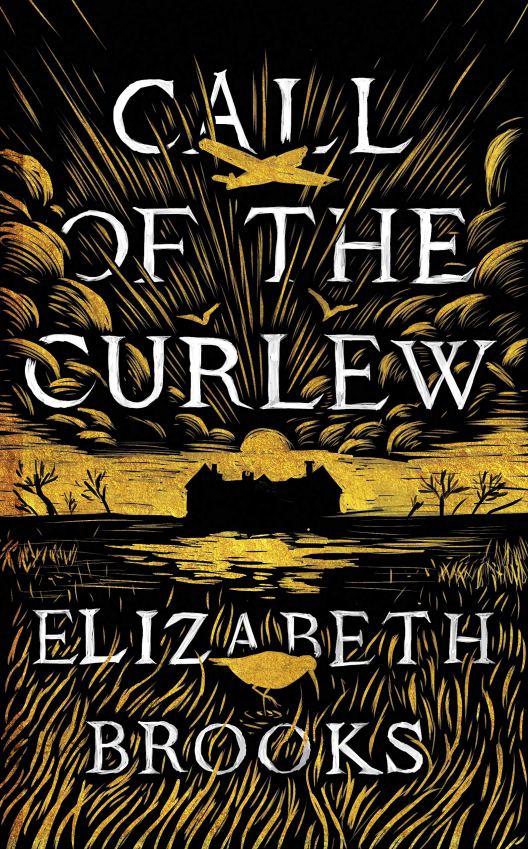
Call of the Curlew begins on 30 December 2015. 86-year-old Virginia Wrathmell has known for years that one New Year’s Eve she will walk onto the marsh and meet her end there. She has been waiting for a sign. The sign has now appeared on her doorstep in the form of a fragile curlew’s skull. Virginia’s plan to spend her final day bidding farewell to her life through the objects in the house is interrupted by the discovery of a near-frozen teenaged girl sitting on the wall outside the house. The girl claims a puzzling connection to the house.
Virginia has lived at Salt Winds, a house on the edge of Tollbury Marsh in Essex, since she was ten-years-old when she was adopted by Clem and Lorna Wrathmell. Clem is a writer and some years older than Lorna. An immediate rapport develops between Virginia and Clem although her relationship with Lorna is less easy and develops slowly. The Wrathmell’s wealthy neighbour and Clem’s boyhood friend, Max Deering, is an unsettling presence. Almost a stereotype with his smooth face and pencil thin moustache which he strokes, Deering appears to have some sort of hold over Lorna.
The story is told in dual timelines—the days of the 30th and 31st December 2015 and two years beginning December 1939—in alternating chapters; the modern chapters are much shorter. Both are in Virginia’s point of view but the 1940s story is the observant child’s incomplete understanding of what is happening around her, although there is enough information for the mature reader to draw conclusions. There are secrets in the lives of all the adults at Salt Winds, secrets still affecting lives in 2015.
The story is atmospheric with the marsh almost a character itself, changing in response to the seasons and Virginia’s view of the world. For the most part, the 2nd World War is a rumble in the background of the novel, but when it finally arrives on Tollbury Marsh it has far-reaching consequences for Virginia and her family. Call of the Curlew is beautifully written in poetic, haunting prose and the characters, perhaps with the exception of Deering, well developed. As the story progresses slight observations or brief conversational asides can alter the reader’s perception of characters, rounding them out more fully. Although I found the 1940s story much more compelling than the later period, both are necessary for the complete resolution of the mystery at the heart of this novel. It is a memorable story that touches on themes of loss, guilt and the hold the past can have on the present.
Another review can be found here.
That sounds interesting, although I’m not a fan of dual timeline stories. I’m reading one at the moment and I’ve usually forgotten the cliffhanger when I return from one time to the other.That maybe why this particular author repeats things so often.
LikeLiked by 1 person
Reviews for this one were interesting although I prefer straight historical fiction. I find that with a lot of dual timeline stories the contemporary story is forced to mirror the historical which is, most times, strong enough to stand on its own. That said, my comfort reads include Barbara Erskine. She does usually does dual timeline with supernatural elements really well. I was disappointed with her latest, The Ghost Tree, and felt that the contemporary story could have been completely scrapped.
LikeLiked by 1 person
I haven’t read many, but I generally wish the author hadn’t bothered with the historical story, or had just written two separate novels. The authors seemed to me to be more interested in the contemporary characters, but created a more fully-formed world for their historical characters.
LikeLiked by 1 person
Pingback: A Year of Reading – 2019 | Catherine Meyrick